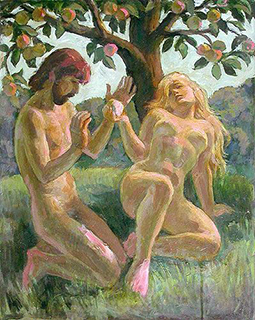Araby is the first story in Joyce's collection of short stories called Dubliners. Like most of Joyce's writing, it's richly symbolic and dense with imagery, but it's up to you to decide what you think these things mean. I have my own idea about what this story is talking about, what do you think it means?
Other audios in series Bedtime Stories
- Bedtime Stories: Araby by James Joyce ←
- Bedtime Stories: Hercule Poirot and the Missing Will by Agatha Christie
- Bedtime Stories: How to Live to Be 200 by Stephen Leacock
- Bedtime Stories: The Case of the Irate Witness by Erle Stanley Gardner
- Bedtime Stories: The Diamond Necklace by Guy de Maupassant
- Bedtime Stories: The Gift of the Magi
- Bedtime Stories: The Lady or the Tiger by Frank Stockton
Comments
You must be logged in with a commenting account to post comments. Log in with a commenting account or register a commenting account if you don't have one. This is not the same as a Membership account.
-
-
A Eve on 2021-10-16 12:04:28 (UTC)
I hope it's not a bad memory! :P
-
-
Matthew on 2021-09-16 20:51:57 (UTC)
I understand this I think, imagine if you spot someone in the corner of your eye, which you find intriguing with a sort of attraction like you are drawn to her, like having a connection person, or like having a desert be you can’t find a spoon to eat I with.
Thank You For These Bed Stories, especially this one you really have one of the best voices around so soft and smooth 😊😴
-
A Eve on 2021-09-25 11:07:39 (UTC)
Thank you so much! I love that analogy - having desert but no spoon. Excellent! xx
-
-
CharlieRomeoLima on 2021-09-11 02:57:47 (UTC)
This is a marvelous tale to wind down to before bed and as a prelude to a vivid dream. I try to imagine the old streets of Dublin as they were a century ago. I don't imagine it has changed too much in character, with rowhouses built of reddish brick bracketing the streets, identical chimneys, white window trim and boldly painted doors, carts and stagecoaches on the roads instead of cars. And of course gas lamps instead of electric. Also people dressed in black or very dark colours - at least that's the way it looks in old black and white photos.
I think the narrator would've been able to hold onto his idealistic fantasies a little longer, if the woman minding her stall was like you, and think back on them fondly as a man years later, rather than having them turn to ashes in his mouth. Or if Araby had the same hours as the Richmond Night Market near my area, which is active a lot later in the evening and closes at midnight. 😁
-
A Eve on 2021-09-25 11:08:44 (UTC)
It's funny you mention the dark colours - in analysis of Dubliners, literary people often remark on how often the colour brown is used, usually referring to the drab clothes. I think it helps sets the atmosphere of poverty and the blandness of everyday life.
-
CharlieRomeoLima on 2021-09-25 18:09:46 (UTC)
In that context I see why stories and oral traditions held such a universal draw for people back then in a world without modern telecommunications and entertainment; compared to the the banality and constant drudgery of real life, these escapes could feel more alive than numbing reality.
And having seen colourized, upsampled footage of downtown Vancouver in 1907, I can verify that Western people did indeed dress overwhelmingly in black or black-like colours even somewhere as far away from the Old World as this city.
-
A Eve on 2021-10-12 19:40:01 (UTC)
That's awesome! I guess different colour dyes were pretty expensive back then!
-
-
-

Oliverliush on 2021-10-16 05:44:49 (UTC)
Oh my god this brought me back to college when I was taking English Literature class... never expected to see it here